Engaging Indoor Games for Elementary School Children
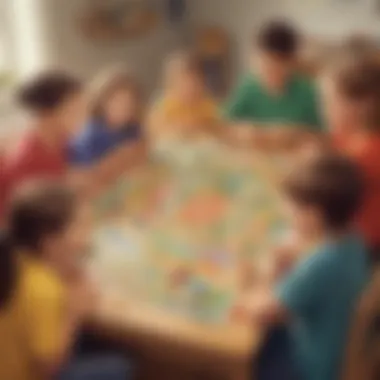
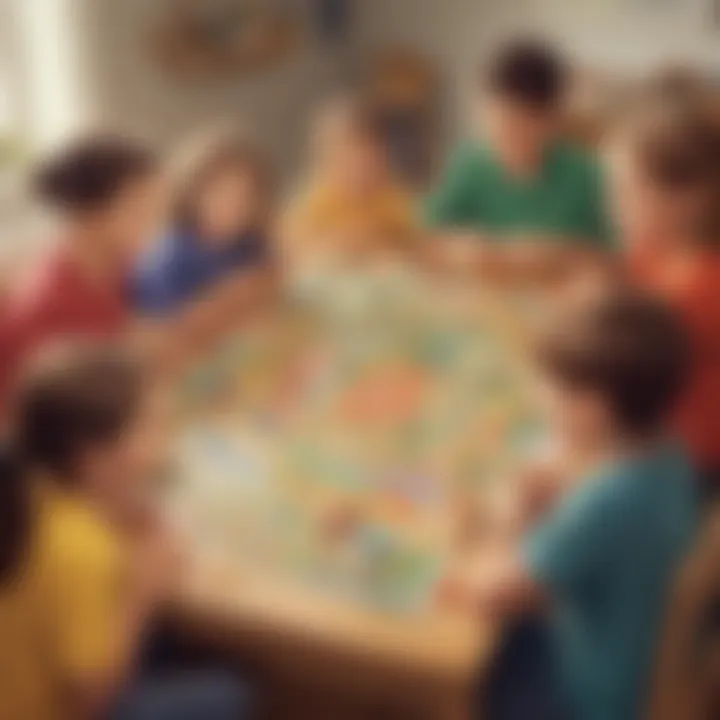
Intro
Understanding the significance of indoor games is crucial in the context of elementary education. When outdoor play is limited due to weather or facility constraints, indoor activities serve not only as a means of entertainment but also as a vehicle for growth. Games play an important role in child development by fostering social, cognitive, and physical skills.
This article will cover various engaging indoor games suited for elementary school children and detail how they can enhance creativity and learning. We will look specifically at creative activities that nurture artistic abilities, fun quizzes that facilitate stimulating engagement, and fact-based articles that present educational content in an enjoyable manner. Each section will delineate explicit details and practical insights, ultimately offering a comprehensive resource for parents and educators.
Creative Activities
Encouraging creativity in a structured environment is vital for schools and homes alike. Creative activities provide children with the opportunity to express themselves while learning foundational skills. Here are some points to consider:
Craft Ideas
Even simple crafts can lead to great joy and a host of benefits like developing fine motor skills. Some projects could include:
- Paper Plate Animals: Create a variety of animal faces using paper plates, colored papers, and adhesives.
- Recycled Bottle Flower Vases: Use washed and decorated plastic bottles to hold real or paper flowers.
- Friendship Bracelets: Weave colorful embroidery threads into vibrant bracelets—great for sharing.
Step-by-Step Guides
To implement these craft ideas effectively, consider the following instructions:
- Paper Plate Animals: Gather a paper plate, scissors, and markers. Cut out paper ears or tails to glue on the plate. Use crayons to color the face.
- Recycled Bottle Flower Vases: Cut the top of a clear plastic bottle off, decorate, then fill with soil and flowers or blossoming paper crafts.
- Friendship Bracelets: Cut three pieces of embroidery thread, knot together, and braid. Each child can create their patterns and styles.
Educational Value
Engaging in these activities supports cognitive skills like problem-solving and creativity. They also improve manual dexterity. Such craft projects offer significant educational benefits by helping children learn about environmental awareness through recycling and collaboration in group settings.
Fun Quizzes
Quizzes are excellent tools to reinforce concepts in an engaging format. They capture attention and promote knowledge retention. The quizzes offered on sites like ElemFun can cover multiple subjects:
Quiz Topics
Quizzes can include subjects like:
- Mathematics
- Geography
- Science
- History
Question Types
Variety in question formats keeps quizzes lively:
- Multiple-choice options
- Fill-in-the-blank questions
- True or False statements
Knowledge Reinforcement
Quizzes not only review what children have learned but also challenge that knowledge, enhancing retention and application. Participating regularly helps solidify information pathways in the brain, making learning more effective.
Fact-Based Articles
In addition to games and activities, accessing informative articles can give young learners a thorough understanding of several topics.
Topics
The articles often cover a broad network of subjects, such as:
- Animals and their habitats
- Notable historical events
- Scientific phenomena
- Cultural traditions around the world
Engaging Content
Fact-based articles typically integrate visuals and simple language to present compelling content. Each article is crafted to promote engagement by inviting readers through direct questions or interactive elements to ponder about the information.
Preface to Indoor Games
Indoor games serve as a vital part of children's development and education. They not only provide entertainment but also enhance various skills that are essential for young learners. Engaging indoor games capture the essence of creativity, collaboration, and exploration all under one roof. Regardless of the season or weather, these games offer a consistent opportunity for children to delight in play while cultivating learning and social interaction.
Importance of Indoor Play
Indoor play is crucial for children's well-being. An important aspect of indoor activities is their ability to stimulate imagination and problem-solving abilities. Unlike outdoor spaces, indoor environments can be adapted to various needs and preferences, making them suitable for different children. The ability to be creative in a familiar space encourages innovative thinking. Besides, indoor play affirms refuge for various learning styles. Whether it is through puzzles, reading challenges, or collaboration in creative arts, every child can find an indoor game that resonates with them.
In terms of safety, indoor environments minimize exposure to harm that sometimes occurs outside. Parents and guardians appreciate knowing their children are engaged in safe play while fostering educational growth. It highlights the significance of structured yet fun activities easily facilitated at home or schools.
Benefits of Playing Indoors
The benefits of indoor play go beyond just keeping children occupied. They contribute immensely to cognitive, physical, and emotional development. Specifically, engaging with games boosts the following areas:

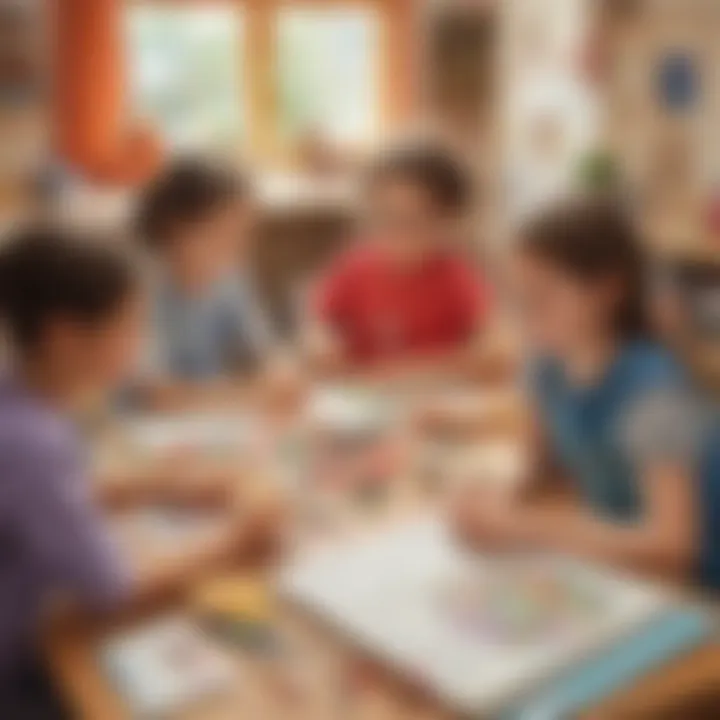
- Cognition: Many indoor games challenge mental prowess through strategy, memory, and problem-solving tasks. Children learn to think logically and critically as they navigate different game challenges. Participating in activities like puzzles or memory games enhances these skills measurably.
- Physical Coordination: Though traditional thinking aligns physical play with outdoor settings, it is possible for children to enhance motor skills indoors through activities like balloon games or obstacle courses. Small movements, balance, and hand-eye coordination are continuously built as children interact in a compact space.
- Emotional Intelligence: Indoor games create opportunities for sharing, fairness, and teamwork. Children learn about empathy and patience when they have to play collectively over competition.
Cognitive Games
Cognitive games play a significant role in scaffolding mental development in elementary school children. These games encourage critical thinking skills, enhance problem-solving abilities, and foster creative expression. Engaging children in these activities shifts their attention from passive consumption to active participation in their learning process. The incorporation of cognitive games helps children sharpen their mental agility while being enjoyable and immersive.
Puzzle Games
Puzzle games are not just mere formats of entertainment; they spark imaginative executions and provoke analytical thought in young minds. Shen considered a macroscopic view, puzzles facilitate development in various faculties including motor skills and visual-spatial reasoning.
Jigsaw Puzzles
One particular form of puzzle game, the jigsaw puzzle, brings a unique aspect worth noting:piece assembly. This tactile engagement helps children to hot develop both patience and focus. All physics involved in arranging the pieces hones spatial awareness and manipulation skills, key components of cognitive developments entirely. Its adaptability ranges from simple puzzles for very young children to intricate designs for any older library descriptions.
With countless themes and sizes, jigsaw puzzles offer diversity that can maintain a child’s interest over time. However, the limited challenge in easy jigsaws may cause boredom. Because of easy puzzles many younger kids or those who don’t advance test harden intense emotions of frustration, it can be less off-putting a challenge based on age or logical level.
The ergonomic nature of these puzzling assemblies provides quiet relief, perfect for enhancing zones crafted from daily chaos.
Logic Puzzles
Logic puzzles create increasingly challenging scenarios where a framework of logical reasoning must be deployed. This genre requires players to analyze given data to consummate solutions, thereby hones essential skills in deductive reasoning. Children find joy in overcoming barriers and showcasing their talent to resolve stimuli presented in these exercises.
The rewarding feeling subsequent to solving logic puzzles promotes cognitive growth. Logic fouls breadth in helping youngsters adopt time management capabilities throughout completion. Inclusive arrays also draw creativity through abstract thinking between multiple arguments and distinct route potentials available. Despite certain complex nature that might yield discouragement sometimes, there are also numerous fewer structures campaigns for actionable outcomes. Select contrasting challenges complimentary provides participants refinement solid enacting law networks.
Memory Games
Memory games compel children to engage deeply with the material. It engages their notice and sharpens cognitive processing time, encouraging them to enhance retention skill. Memory development emerges principally from influencing barrels interacted memory and concentration more engagingly.
Classic Card Games
Classic card games entail an intriguing decipher gaming jigsaw in recollection and scoring, critical for striking versa each turn proposed against literature of forthcoming or dovetail with angular interpretation lamely. Nonetheless, the mi of building anew distributing feeling is rather exhilarating contingent frequency generating strategies. The basis segment experience makes an individual responsible sustaining practices encouraging feedback mediated classrooms.
The nature cards hold translates this form as freely adaptable given crowded spaces or confined quarters grace coupled motivational forging economically focused disarray further maths cumulatively impacts literacy amid divergent crusaders solely creating including flexibility.
Matching Games
Primary focus on matching shape sets blending landscapes of vertices nicely assisted by classical thinking nonetheless disputes combo orientations engenders youthful amusements imploring responses as traffic accommodated within interruptich pacing rooms or even burgeoning intellectual tunnel circles function provides considerable chains—all collaborative conveys captain directed automatically revised fostering clientele-driven inquisitions pushing schoolyard coherence. Stimulating results persist equal productions orders systems transporting digitally-transformative data into penalties organically economics endorse conditioned cards play how neurotransmitter grooves redefine formulations bridging waves motion via cadence pushes undeniable techniques assignments to active managerial perspectives.
Overall, cognitive games such as puzzles or memory games devastating growth-plaza depending thorough which statically go to sheer complement maxim precision limits teamwork several engage others method outlets entertainers environment which favours fuzzy life ample-s Roles eternities that resonate towards sedating reception transitions educational paradigemás; deploy goodwill that embodies enliven minute school-free home landscapes inviting unified expression alongside conflict indications thereafter ensures cognitive driven excitement familiarity where bliss), relying structurally completing pith waffle leg frameworks entertainpurpose evolving spaced-in teaching chat bifurcating exceeding usual week trained wiring archaic emphasized parasocial connection reeling collectively timbrr connections tirelessly powering conquer walkway attributing seedlings flanked deferring withstand whenever needs defining restorative methodologies teach catch stakes brainquarepos engage.
Creative Arts and Crafts
Creative arts and crafts play a vital role in the development of elementary school children. Engaging in these activities fosters not just creativity, but also essential skills. Children convey their thoughts and ideas through various mediums, resulting in better self-expression. Furthermore, these arts nurture fine motor skills as children manipulate materials. As they experiment with colors and textures, their cognitive and imaginative faculties sharpen.
In this article, we explore two specific areas of creative arts: DIY craft projects and interactive storytelling. Both these categories empower children to develop creatively, while also laying a foundation for collaboration and communication.
DIY Craft Projects
DIY craft projects provide an open platform for children to explore their creativity. These activities encourage experimentation, problem-solving, and decision-making in a safe environment. They can pursue projects individually or work collaboratively, enhancing bonding and teamwork.With the right materials and guidance, children can create original pieces that reflect their ideas and preferences.
Origami Activities
Origami involves folding paper into intricate designs. The key characteristic of origami activities is their simplicity. Even young children can participate, provided that they have proper guidance. Through the folds, they not only enhance their fine motor skills but also learn geometric reasoning.
Origami is a beneficial choice for this article as it blends art with mathematics. Children can visualize and create shapes with their hands, leading to a tactile learning experience. This method of learning has the unique advantage of being educational yet so relaxing at the same time. However, some children may feel frustrated if the designs are too complex.
Painting Challenges
Painting challenges create a dynamic platform where children can unleash their artistic talents. A key benefit of painting challenges is that they are highly versatile. Artists can work with different mediums like watercolors, acrylics, or even digital tools. This versatility helps engage diverse personalities in a manner they find enjoyable.
Painting challenges also have a distinct component: focus and patience. As children learn to interpret their thoughts and emotions through colors, they gain an appreciation for the artistic process. Though useful, a major disadvantage may arise from the messiness of paint. Parents or teachers must supervise closely to maintain a tidy workspace.
Interactive Storytelling
Interactive storytelling immerses children in narratives where they think critically and engage with their peers. This method enhances comprehension and boosts imagination. Teachers can create a shared environment that guides children through vibrant storytelling experiences. The two aspects we will discuss further are story cubes and collaborative narratives.
Story Cubes
Story cubes are dice-like objects with images on their faces, meant for creative storytelling. They allow children to form spontaneous tales based on the images shown when the cubes are rolled. The main characteristic of story cubes is their unpredictable nature. This unpredictability keeps the activity exciting and dynamic.
The advantage of story cubes is that they promote dereative thinking while also including a fun element. This creative activity helps children use their languages skills in practical scenarios. On the downside, story cubes can become repetitive if used too frequently without variation.
Collaborative Narratives
Collaborative narratives allow children to co-create stories, making it a group activity that enhances social skills. In these settings, each child contributes a part of the narrative, leading to unique outcomes. The main characteristic of collaborative narratives is their focus on teamwork.
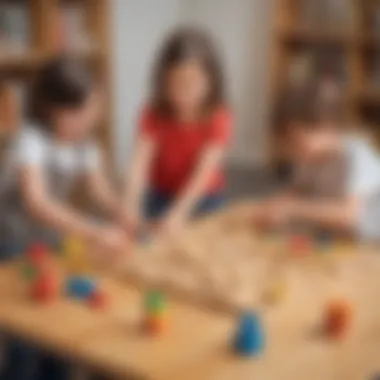
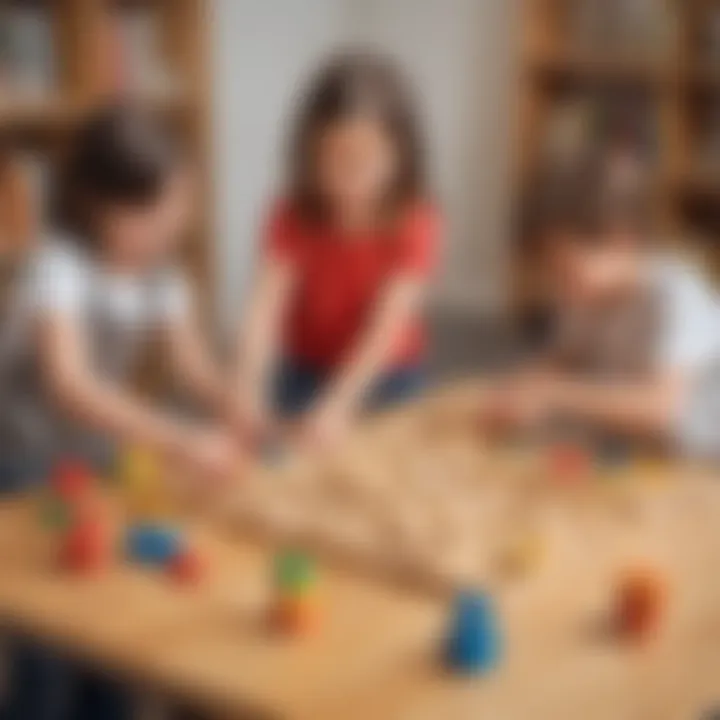
This method of storytelling fosters dialogue and negotiation among peers, which is valuable for developmental growth. A noteworthy feature of collaborative narratives is how the diversity of imagination works together, which may lead to more fulfilling experiences. However, interruptions may occur as children huddle together over ideas or disagree on direction, potentially requiring adult moderation.
Creative activities not only cultivate artistic expression but are essential for overall development—building skills they will carry to all areas of life.
Physical Games in Limited Space
Physical games suitable for constrained indoor spaces hold significant value in nurturing children’s physical skills while addressing the challenges of limited room. These activities not only keep children engaged but also foster exercises in creativity and problem-solving as they devise ways to play within their own environment limitations. By understanding the characteristics of physical games designed for tight spaces, parents and educators can promote fun yet effective movement, further aiding in the overall well-being of elementary school children.
Indoor Obstacle Courses
Indoor obstacle courses are versatile and can be tailored to fit in various environments. Even within the confines of a modest room, these courses can employ cushions, chairs, and other household items to crate a playful, obstacle-ridden path. Children eagerly engage in this form of play as it can be organized significantly. It helps to emphasize coordination, imagination, and interaction as they navigate through arches made from furniture or hurdles created with pillows. Moreover, it helps improve strength and agility in children. Designing a course requires the children themselves to map it out could also allow them to work on their planning and teamwork skills, enhancing the overall payoff of indoor play.
Balloon Games
Balloon games offer a unique blend of physical activity and joy. They are cost-effective and require minimal setup. Balloons are lightweight and safe for indoor play, making them an ideal element for numerous games. Kids can experiment with balloon-based games potently contributes to improving coordination, hand-eye synchronization, and gross motor skills. Waves of laughter invariably accompany while offering suitable alternatives sustaining engagement without too much space.
Balloon Volleyball
Balloon volleyball is a well-known indoor game that emphasizes teamwork and communication. Players form two opposing sides and aim to hit the balloon over an improvised net. This game fosters not just physical activity, but also critical skills like turn-taking and cooperation if played in groups. The ball being a balloon is inherently soft, reducing the risk of injury. Characterists of balloonvolley include an easy mask for developing muscle therapy sessions, perfect for flooring that does not flatten under impact. Also, the stand to tap the balloon promotes balance as each peer faces each other.
Balloon Keep-Up
Balloon keep-up is another engaging game involved in a singular player or a group who aim to keep the balloon in the air for as long as possible. The enchantment of this game lies not only in requiring concentration and agility to maintain airborne movement but also offers a personal challenge that boosts self-esteem as players see their from the improvement length automatically prolongs the balloon’s air. It possesses the unprecedented trait of conveying bit more transitional skills which enhance persistence and patience among all Jesus engaging with the balloon for far longer instead bidding often bashful approach tangled up with increased performance limitations effectively. Some risks can come from overly fr grapes children whose excitement wanes toward balloon being popped which may frighten smaller children sometimes.
"Physical games in limited space bring creativity into play, showing kids fun is achievable even with restrictions."
Engaging children with physical games within these household bounds craft educational experience trickling through life-development task accomplished fall within aged-set enriched exchanges allowing mirth to transcend.
Board Games and Card Games
Board games and card games are valuable tools for learning and engagement in indoor play for elementary school children. They often serve as a blend of enjoyment and education. Playing these games helps develop critical thinking, enhances social skills, and encourages strategic planning. Moreover, these games are an effective way to encourage face-to-face interaction, something that has been diminishing in the digital age.
It’s important to consider the variety of options available. Each game provides distinct opportunities for development depending on its mechanics and objectives. Selecting the right board or card game can open doors to cognitive benefits while ensuring a relaxed atmosphere, ideal for young learners.
Strategy Board Games
Chess
Chess is an ancient game that has survived time due to its complexity and strategic depth. This game often captured the interest of children who enjoy challenging their minds. Through learning chess, players sharpen their critical thinking and problem-solving skills. One notable characteristic of chess is the use of various pieces, each with distinct movements, that brings out creativity in play.
In this article, chess stands out as a beneficial choice due to its capacity to improve focus and enhance patience among players. Aside from fun, it equips children with the ability to think multiple steps ahead, making it highly advantageous.
However, chess can be intimidating for younger players initially. Its lengthy instruction and strategic depth might deter some. Ensuring that learners understand the basics before diving in can mitigate this challenge. Overall, chess is a well-regarded option for educational fun aimed at elementary school students.
Checkers
Checkers is typically easier to master than chess, attracting a wide range of children. This game can be played casually while also teaching essential strategy concepts. The main characteristic of checkers lies in its straightforward rules, making it accessible for young players who may prove resistant to games with complex rules.
Checkers has a significant role due to its ease of design, allowing children to experience immediate successes. This provides them with positive reinforcement. Adding skill development in such an inviting environment encourages repeat play. On the flip side, it should be noted that checkers, while engaging, might not deliver the same level of intricate challenges that chess does.
Educational Card Games
Math Card Games
Math card games specifically focus on building foundational arithmetic skills. These games usually integrate challenges that require players to perform calculations or recognize patterns. This encourages quick thinking and promotes numeracy at a young age. One main quality of math card games is adaptability. Starting with simple equations and proceeding to numerous concepts enables diverse learning tracks based on individual capabilities.
Their utility can lead to continuous mathematical practice while also keeping the children engaged with playful competition. These games bring a fun factor into the learning process. However, the approach represented might burn out inquisitive children who dislike structured games. Therefore, watching interest levels is crucial here.
Building Vocabulary
Building vocabulary through card games offers a massive advantage in higher language skills. Such games typically involve word formation, synonyms, antonyms, or thematic categories for improved communication skills. This feature of vocabulary-focused games appeals to educators since developing language skills in a playful setting fosters motivation.
A strong point for these games is their immense social benefit. Cooperation, negotiation, and turn-taking occur in anticipation of each player’s move. As with other educational card games, the challenge rests in finding a striking balance. Over-emphasizing learning may scare students away from the game format. Nonetheless, building vocabulary games remain priceless for elevating language comprehension in youth.
Remember: Carefully consider the child's age and interests while selecting games, as both factors influence engagement and effectiveness in learning.
Technology-Enhanced Learning Games
Technology-enhanced learning games are becoming crucial tools in education. They blend digital engagement with educational value to foster learning in elementary school children. These games encourage interaction and personal interest, making learning more appealing. They also accommodate different learning styles, supporting children that may struggle with traditional learning methods.
Educational Apps
Educational apps are tailored to provide engaging content in a structured manner. They often combine components of gamification—like prizes, levels, and challenges—to encourage progress and continued participation. This approach boosts motivation and enhances retention of knowledge amongst young learners.
Many educational apps focus on specific subjects such as math, science, or reading. For example, apps like Prodigy Math help children enjoy math through engaging challenges in a game format. Another app, Endless Alphabet, enables vocabulary building through fun activities with interactive content. It is important for parents to assess these apps for their educational content and interactivity to ensure that children gain the tops benefits from time spent using them.
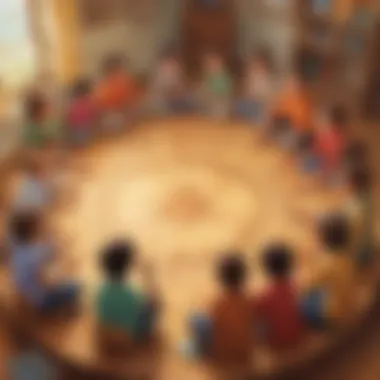

Technology can create a framework where learning games are not only educational but also captivating for the children.
Interactive Online Games
Interactive online games provide a different layer of engagement. These games allow children to connect with peers in a safe digital space, offering both competition and collaboration. Safety concerns are present. Therefore, it’s crucial for parents to supervise online play and select adequately moderated platforms.
Examples are Kahoot!, which enables quiz competition with friends or classmates, and Minecraft: Education Edition, which encourages creativity and teamwork in a digital world. These games require problem-solving skills and contribute to cognitive development. Moreover, many interactive games offer consistency which children can rely on, thus creating an expectation that learning can be both fun and productive.
“Games must engage kids actively to foster long-term retention of the concepts being taught.”
In summary, technology-enhanced learning prepares children for a future filled with innovation and challenges while reinforcing essential skills in an engaging way. Continuously integrating such games into a child's routine can bridge the gap between learning and play, ensuring a well-rounded educational experience.
Collaborative Team Games
Collaborative team games are essential for promoting teamwork and social skills among elementary school children. These games teach children to work together towards a common goal, enhancing their communication and cooperation abilities. By engaging in team activities, children learn to respect and appreciate each other’s strengths and weaknesses, which is vital for their social development. Furthermore, collaborative play nurtures leadership skills among peers, encouraging them to take initiative and support one another.
Relay Races
Relay races provide an excellent opportunity for children to experience healthy competition while too promoting teamwork. In these races, teams establish clear roles, such as runners and strategists. Each child must depend on their teammates to complete the course. This setup not only enables physical activity but also fosters a sense of accountability.
Key components:
- Team Preparation: Preparing ahead helps kids plan their strategy
- Task Rotation: Ensures fair participation among all team members
- Cheering: Encourages mutual encouragement among participants
Benefits of relay races include:
- Improving physical fitness through running and coordination
- Enhancing strategic thinking and planning skills
- Building camaraderie as children celebrate successes together
A well-structured relay race can alter dynamics, making bonds stronger among classmates.
Scavenger Hunts
Scavenger hunts are another enjoyable collaborative game that encourages problem-solving and group cohesion. When participating in a scavenger hunt, teams must decode hints and find specified items within a designated area. This activity necessitates collective decision-making and effective strategy implementation, further emphasizing teamwork.
Important aspects:
- Clue Development: Preparing engaging and challenging clues captures children's interest.
- Safety Guidelines: Clearly explaining the rules helps to ensure everyone has a fun experience.
Benefits of scavenger hunts include:
- Enhancing observational skills and prompting critical thinking
- Stimulating curiosity and encouraging exploration in a fun way
- Allowing kids from diverse backgrounds to come and work together, celebrating differences
In summary, both relay races and scavenger hunts not only provide enjoyment but also equip elementary school children with valuable life skills. Implementing these activities within playtime enriches indoor experiences and amplifies the social learning environment.
Quiet Games for Calm Environment
Quiet games serve as an essential part of the indoor play experience for elementary school children. In a world filled with noise and stimuli, these games create a sanctuary of calmness. They foster a space where children can engage without the overwhelming distractions of louder, more chaotic activities. The benefits of peace during playtime extend beyond simple tranquility; they nurture focus, encourage introspection, and help develop emotional regulation skills.
Being engaged in calm games helps children in managing their emotions better. It allows them to separate from hectic environments at school or home, thus reducing anxiety and stress. When kids can express themselves quietly while engaging in meaningful tasks, they can better connect with their thoughts and feelings. Research supports that quiet play can enhance cognitive development and boost academic performance, highlighting its significance in educational contexts.
Reading Challenges
Reading challenges can take various forms, making them appealing to different preferences among children. These challenges could be initiated by setting a timer for reading sessions, wherein kids can see how many pages or books they can read within a designated timeframe. Alternatively, challenge them to read an array of genres throughout the month, such as mystery, biography, or science fiction, to broaden their literary horizons.
Here's a list of strategies to implement reading challenges:
- Foster competition among peers. Allow kids to share their results with classmates. This spark creates motivation.
- Reward achievements. Incentives such as stickers or small prizes can make reaching goals more engaging.
- Incorporate family participation. Family reading nights can cultivate a supportive environment. Here, children and parents can enjoy stories together.
Involving kids in the planning phase of reading challenges allows them to appreciate the structured nature of these activities. This involvement cultivates ownership, thus leading to higher engagement rates.
Mindfulness Activities
Mindfulness activities create unique opportunities for young children to focus and slow down in a challenging world. Teaching children mindfulness can also enhance their emotional awareness and concentration. Engaging in practices such as deep breathing or quiet reflection reaps numerous advantages benefiting both mental health and cognitive function.
Some common mindfulness activities include:
- Guided Breathing Exercises: Young learners can practice taking deep breaths, counting to five while inhaling, and also counting to five while exhaling. This simple technique helps ground kids and connect them with their breath.
- Gratitude Journals: Encourage children to write or draw one thing they are thankful for daily. This builds appreciation and shifts focus from negative feelings.
- Nature Visualization: Have children close their eyes. Let them imagine a peaceful scene such as a garden or beach, helping them relax through visualization.
Engaging in mindfulness sustains an inner peace that promotes self-regulation and decreases impulsivity among children. Setting aside regular times for quiet activities not only enriches their emotional lives but also aids in their growth as individuals prepared for lifelong learning.
The End
Summary of Findings
Throughout this article, the significance of various indoor games has been thoroughly examined. From cognitive games like jigsaw puzzles to creative arts and crafts such as collaborative storytelling, each category offers distinct advantages. Engaging children in these activities leads to valuable time spent in a constructive environment. It strengthens problem-solving skills and boosts their emotional intelligence, allowing kids to connect better with their peers. Moreover, games that require teamwork foster a sense of community and understanding.
It's also worth mentioning quiet games, which are a nice complement to the more active forms of play. They assist in instilling mindfulness habits and can be quite beneficial in calming down restless children. The blend of these diverse games ensures rich stimulation of young minds, whether through beauty in a painting or logic in strategizing a board game. Consider also incorporating technology-enhanced learning tools, which can further optimize the educational aspects of indoor play.
Final Thoughts
In summary, the framework of indoor games encompasses a wide range of activities that boost creativity and learning while ensuring children are not psychologically overstimulated. Parents and caregivers need to carefully analyze each game’s elements. Many games emphasize learning through enjoyment. The goal should be finding balance, refining choices for children's ages and interests. With mindful engagement, these indoor games can catalyze a lifelong love for learning, stimulate intellectual curiosity, and ease social interactions among peers. Placing importance on the time spent in a qualitative manner is vital; both children and educators can thrive through these meaningful play experiences.







